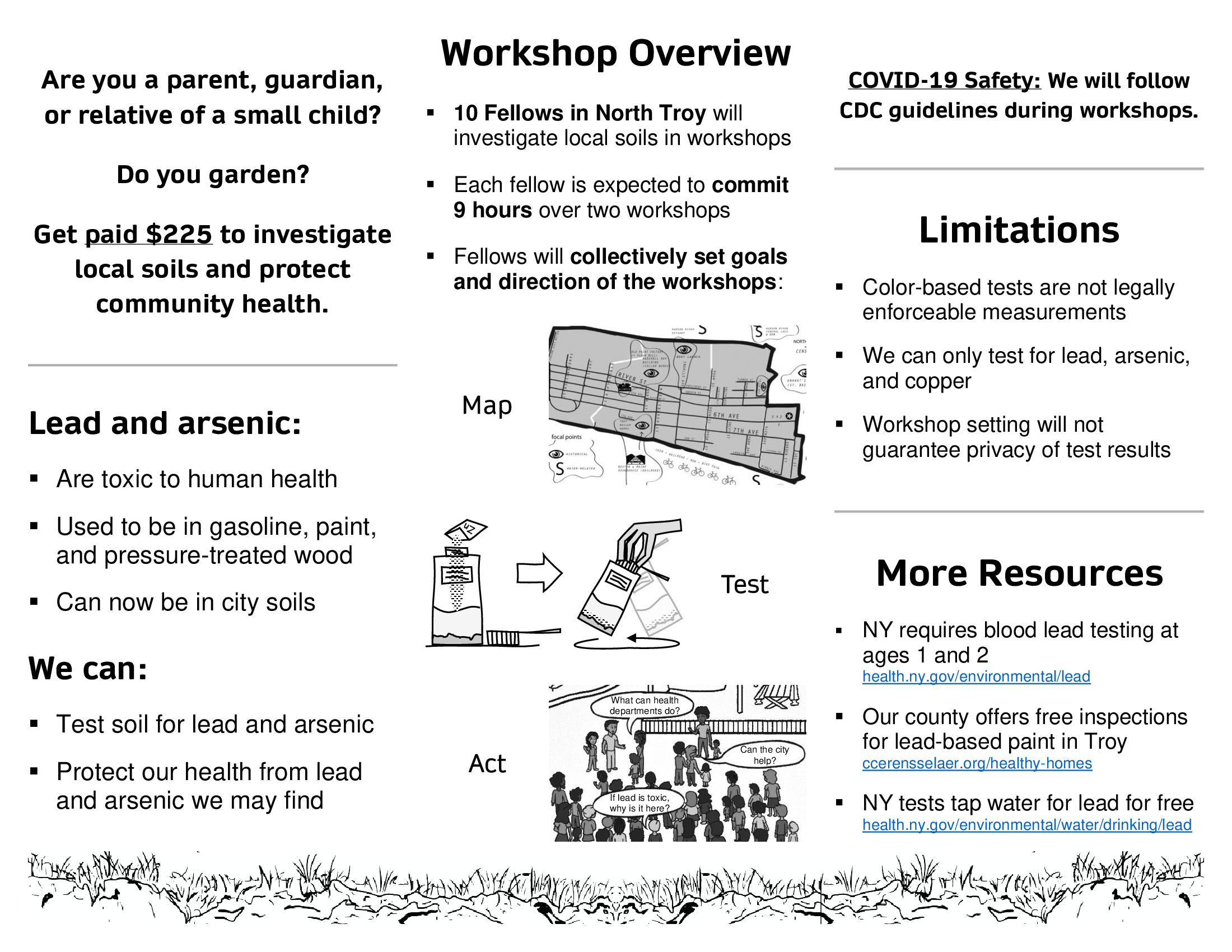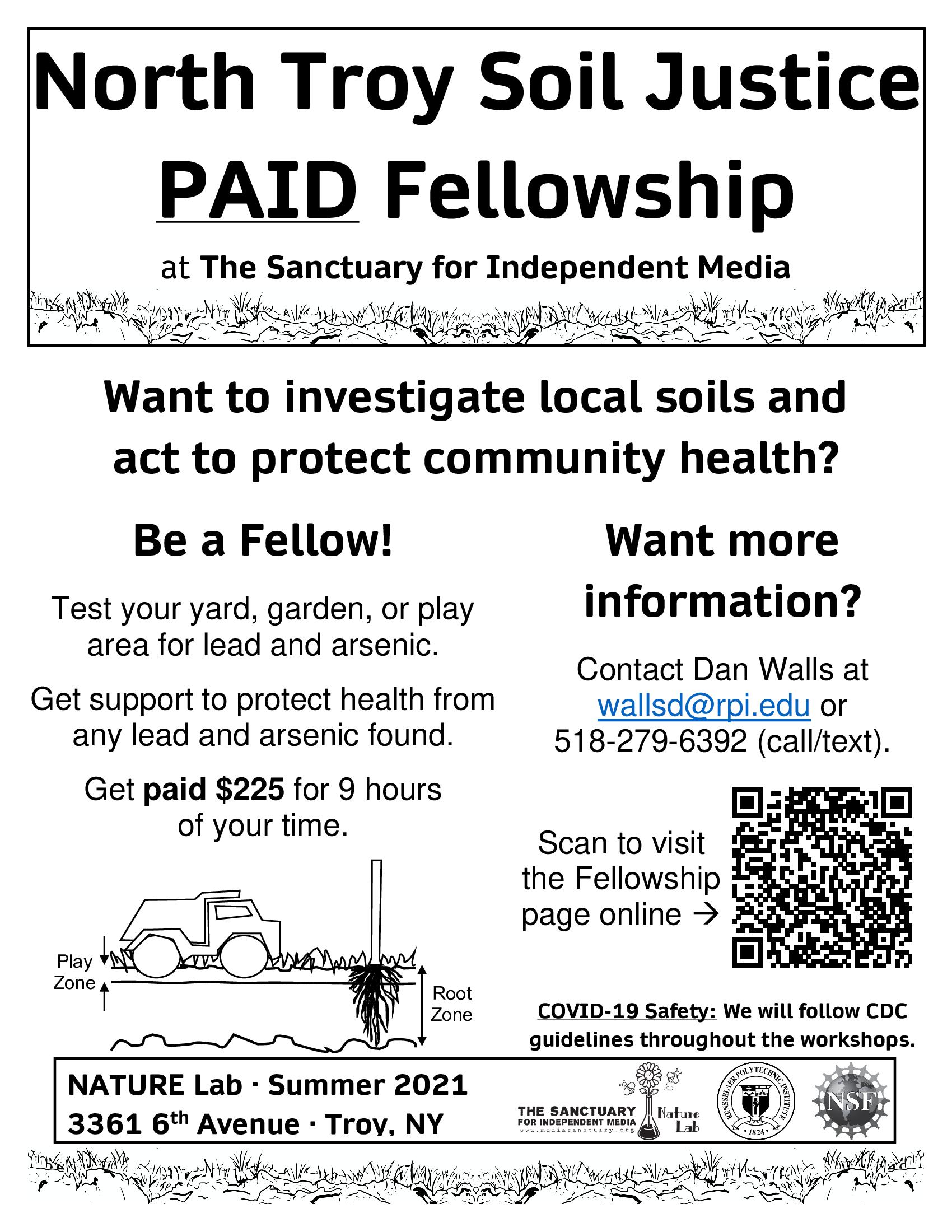Abby, Dan, and Sarah doorknocked on the blocks surrounding NATURE Lab to announce the Soil Justice Fellowship at NATURE Lab in August. We handed out over 100 “Soil in the City” comic books and informational brochures about the Fellowship. We spoke to many neighbors of the NATURE Lab about how soil can be a pathway of exposure to lead, and what measures we can take collectively to protect community health.
You can find the informational brochure in English here and in Spanish here.
You can find the comic book in English here and in Spanish here.






